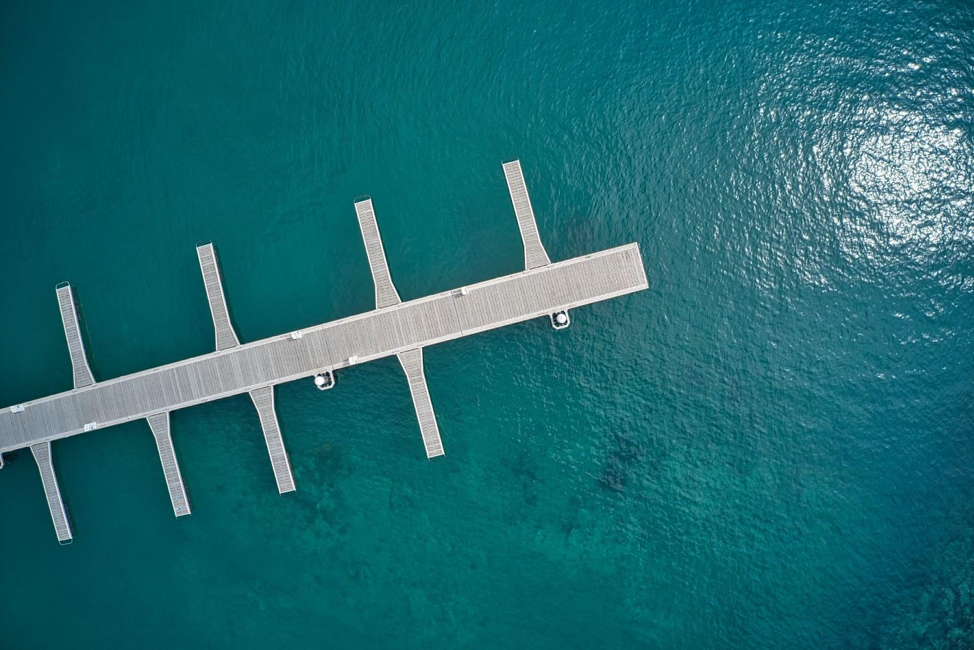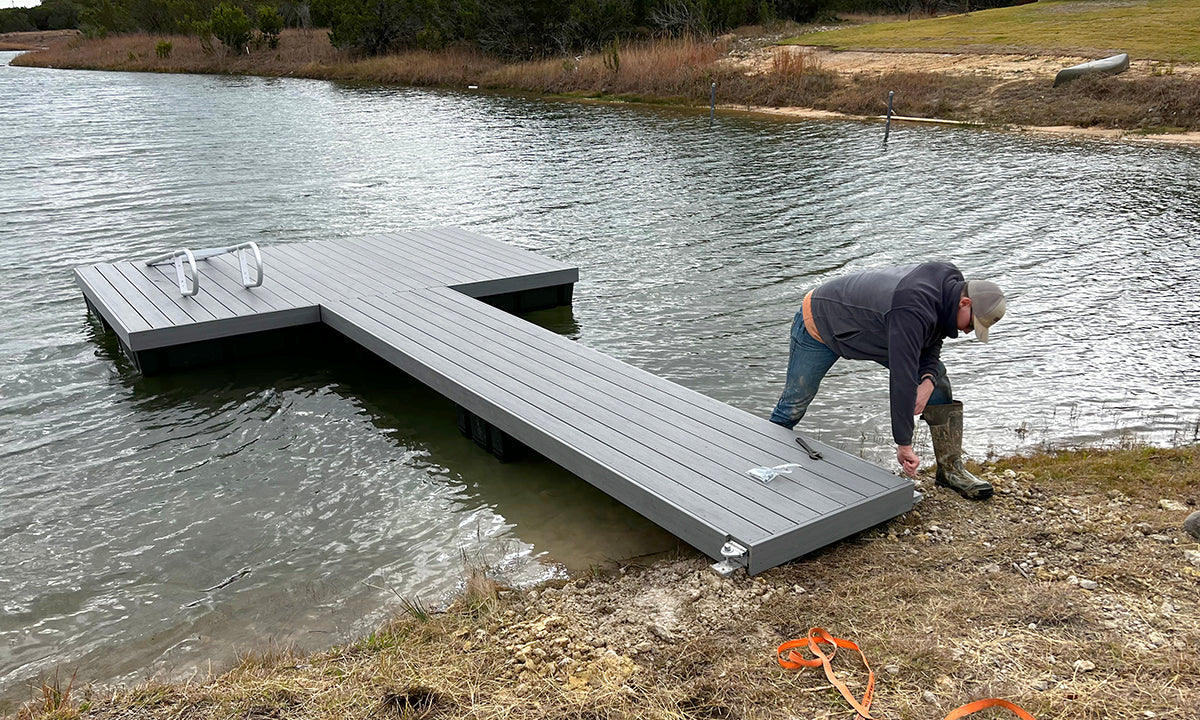Maximizing Your Outdoor Area with Specialized Floating Dock Solutions
Maximizing Your Outdoor Area with Specialized Floating Dock Solutions
Blog Article
Produce the Perfect Docking Option With Floating Docks
Floating docks present a flexible remedy for a selection of maritime requirements, adapting perfectly to changing water levels and diverse vessel types. As we check out the necessary aspects that contribute to the effectiveness of floating docks, numerous key factors concerning stability and maintenance will emerge, increasing concerns regarding how to enhance your docking experience.

Advantages of Floating Docks
Floating docks offer numerous benefits that make them a perfect option for different maritime applications. Among the key advantages is their adaptability to altering water levels. Unlike dealt with docks, floating docks fluctuate with the trend, ensuring constant availability for vessels. This feature is specifically crucial in areas prone to considerable tidal fluctuations or seasonal water degree changes.
In addition, floating docks are typically simpler and quicker to set up contrasted to typical set structures. Their modular layout enables simple assembly and disassembly, facilitating upkeep and relocation when essential. This flexibility is particularly useful for short-term applications or in settings where problems may transform.
Floating docks additionally often tend to be more ecologically pleasant, as they minimize interruption to the seabed and bordering marine ecosystems. Their buoyant nature decreases the threat of damage to marine life, advertising a much healthier atmosphere. Moreover, these docks can be customized to accommodate different vessel dimensions, making sure that they meet certain operational demands - floating dock builder.
Eventually, the mix of versatility, ease of installment, and ecological considerations makes floating docks an extremely effective solution for a wide variety of maritime needs.
Choosing the Right Materials
Selecting the ideal products for floating docks is important to guarantee longevity, stability, and toughness. The option of materials straight affects the dock's efficiency in numerous ecological problems, consisting of exposure to water, sunshine, and prospective wear from aquatic web traffic.
Common materials utilized for floating docks include light weight aluminum, wood, and high-density polyethylene (HDPE) Aluminum is lightweight, corrosion-resistant, and requires minimal upkeep, making it an exceptional choice for durability. Its initial cost can be higher compared to other materials.
Wood, while aesthetically appealing and providing a typical look, can be prone to rot and pest damages if not properly dealt with. Using pressure-treated wood or naturally long lasting types like cedar or redwood can alleviate these concerns.
HDPE is a preferred selection as a result of its resistance to UV rays and chemicals, in addition to being eco friendly. dock company. It is available and lightweight in different shades, allowing for personalization
Eventually, the right product choice will depend upon specific demands, including spending plan, preferred aesthetics, and ecological considerations. Careful examination of these factors will certainly cause a resistant and successful floating dock option.
Design Factors To Consider for Security
When developing floating docks, guaranteeing stability is a fundamental facet that can substantially impact their capability and safety and security. Security in floating dock design is affected by different elements, consisting of buoyancy, weight distribution, and the arrangement of elements. An optimal buoyancy system ought to use products that supply adequate lift while reducing weight. This equilibrium guarantees that the dock stays check my blog above water, even under differing lots.
Weight distribution is critical; evenly distributing loads throughout the dock prevents tilting and enhances stability. This can be accomplished with strategic placement of docking equipment, such as cleats and fenders, in addition to appropriate spacing of floats. Furthermore, the measurements of the dock need to be attentively prepared. Wider layouts can provide boosted security, specifically in harsh water conditions, while longer docks may need added assistances to stop drooping.
One more vital factor to consider is the environmental influence, including wave activity and wind. Incorporating functions such as sidewalls or skirting can help mitigate the impacts of ecological forces, keeping security in damaging problems. Eventually, a combination of thoughtful design, product selection, and understanding of ecological elements will certainly yield a drifting dock that satisfies both security and safety requirements.
Setup Tips and Strategies

Next, protect the required permits and follow local policies, which might dictate setup techniques and ecological considerations. If needed, involve a certified specialist experienced in floating dock installations. Use premium materials made for marine atmospheres to improve longevity and long life.
When positioning the dock, align it alongside the coastline to help with very easy access. Ensure that the anchoring system is robust, utilizing cinder block or helical supports to maintain the dock versus wind and wave activity. It's important to represent seasonal water level variations, consisting of potential ice motion in colder environments.
During the installment, verify the dock's floatation and security prior to wrapping up the anchoring. Consistently evaluate the setup for any kind of indications of wear or damages. By following these strategies and suggestions, you can accomplish a secure, useful, and visually pleasing floating dock setup that fulfills your needs.
Upkeep and Care Guidelines
Preserving and caring for floating docks is important to extending their lifespan and guaranteeing secure usage. Regular assessments ought to be performed to determine any kind of indicators of wear, damages, check this or aquatic growth. Seek cracks, loosened fittings, or discolored areas on the dock's surface area, as these problems can compromise structural honesty.
Cleaning up is essential. Make use of a stress washing machine to remove algae, barnacles, and particles, which can build up over time. For stubborn growth, consider ecologically pleasant cleaning agents that will not damage aquatic life.
Furthermore, check the mooring lines and anchors regularly to ensure they are secure and cost-free from corrosion. Replace any frayed or damaged lines without delay to keep click here for more info stability.
Throughout extreme weather condition, such as storms or freezing problems, take precautionary procedures. Secure the dock with additional mooring lines and, if practical, remove any kind of detachable parts to stop damages.
Conclusion
In final thought, the implementation of floating docks presents a flexible and reliable docking option appropriate for various maritime applications. With correct installation and routine maintenance, floating docks can give efficient and trustworthy docking experiences for a broad array of vessels.
As we explore the important components that contribute to the efficiency of floating docks, numerous key variables regarding security and maintenance will arise, elevating inquiries concerning how to maximize your docking experience. Unlike repaired docks, floating docks rise and fall with the tide, making sure constant accessibility for vessels.When designing floating docks, ensuring security is an essential aspect that can significantly impact their performance and safety. Stability in floating dock layout is affected by various factors, consisting of buoyancy, weight distribution, and the arrangement of elements. Ultimately, a mix of thoughtful style, material option, and understanding of ecological aspects will certainly generate a drifting dock that satisfies both stability and safety and security demands.
Report this page